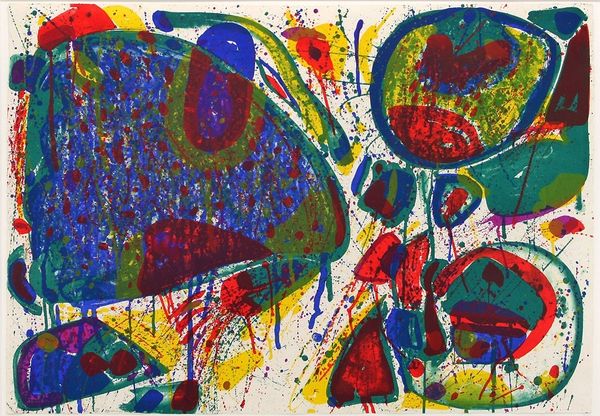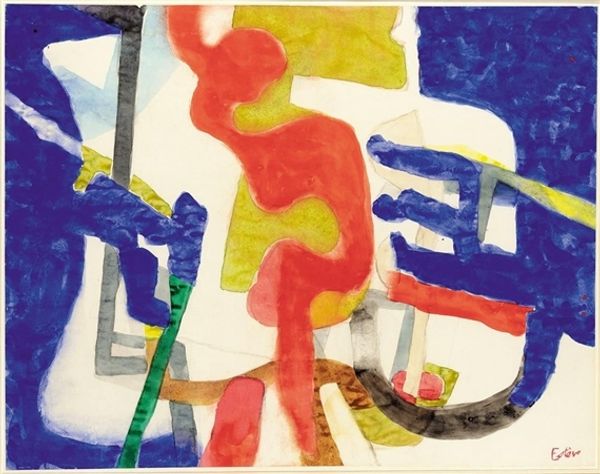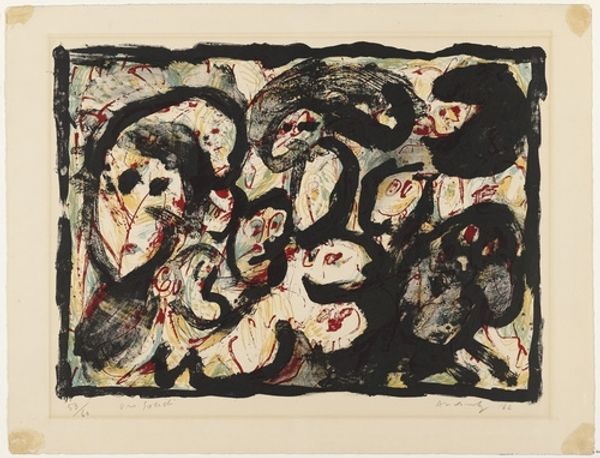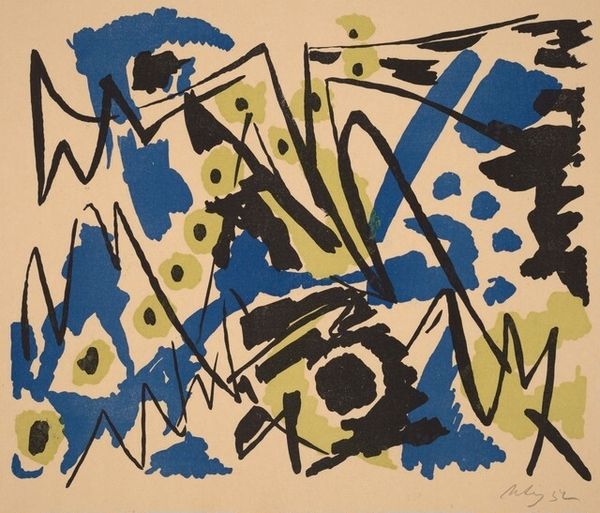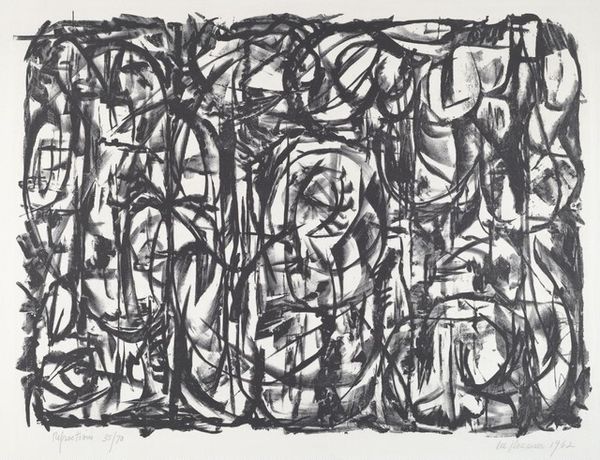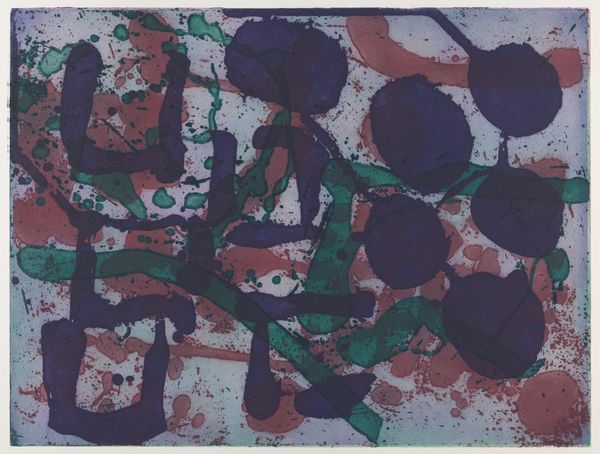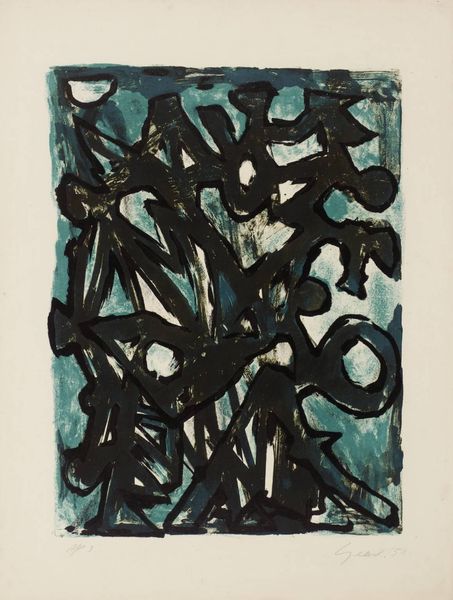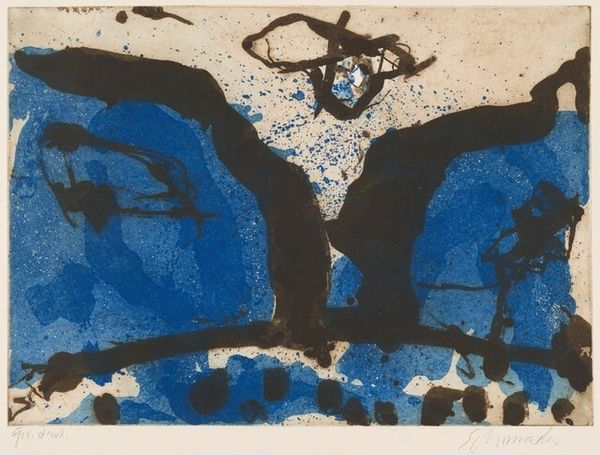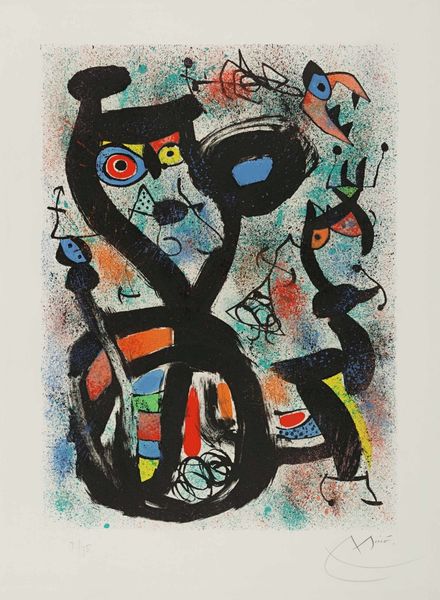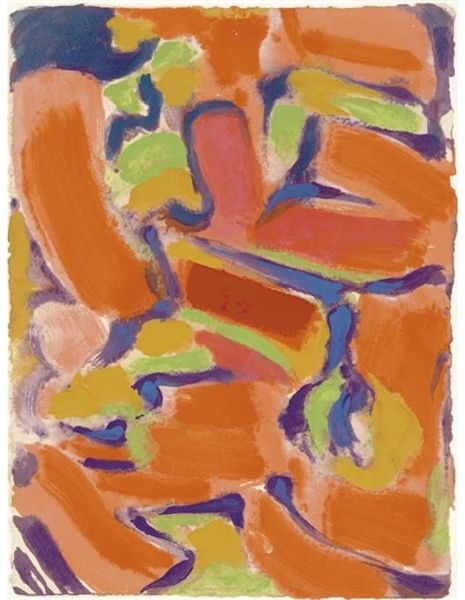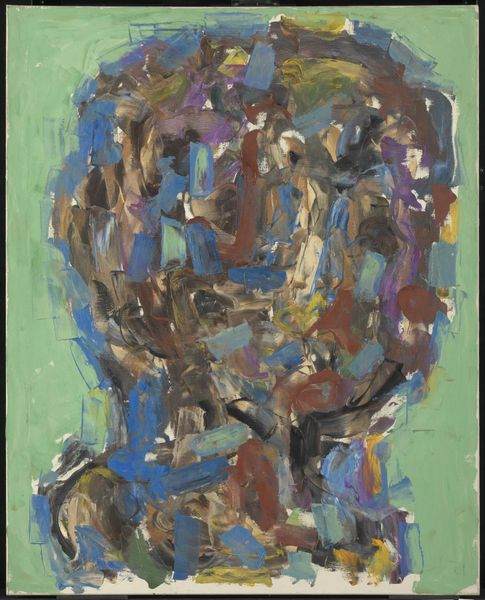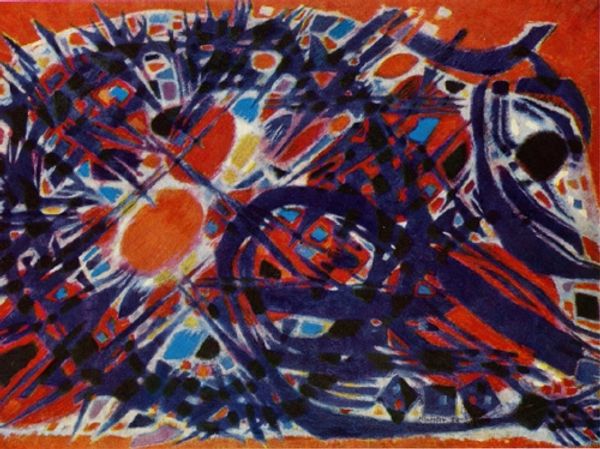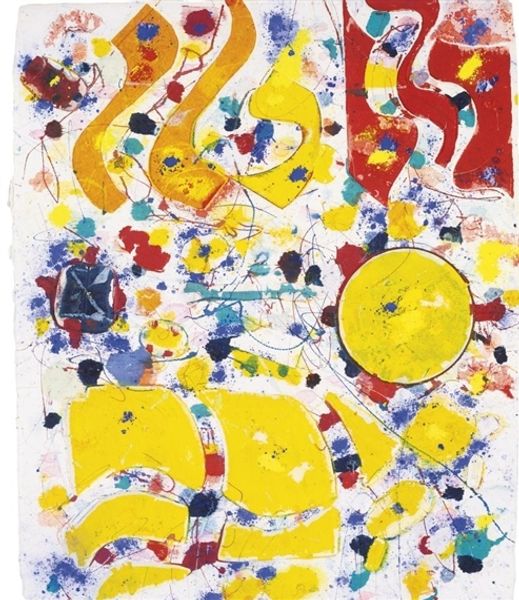![[title not known] by Patrick Heron](/_next/image?url=https%3A%2F%2Fd2w8kbdekdi1gv.cloudfront.net%2FeyJidWNrZXQiOiAiYXJ0ZXJhLWltYWdlcy1idWNrZXQiLCAia2V5IjogImFydHdvcmtzLzk5N2FkNGY5LWZlMzUtNDQ5Yy1hMmRiLTlhNTJmNWQxNjViMS85OTdhZDRmOS1mZTM1LTQ0OWMtYTJkYi05YTUyZjVkMTY1YjFfZnVsbC5qcGciLCAiZWRpdHMiOiB7InJlc2l6ZSI6IHsid2lkdGgiOiAxOTIwLCAiaGVpZ2h0IjogMTkyMCwgImZpdCI6ICJpbnNpZGUifX19&w=3840&q=75)
Dimensions: unconfirmed: 670 x 800 mm
Copyright: © Estate of Patrick Heron. All Rights Reserved, DACS 2014 | CC-BY-NC-ND 4.0 DEED, Photo: Tate
Editor: Here we have an untitled print by Patrick Heron. It looks like it was created with some kind of stencil, and I’m really drawn to the energy of the shapes. How do you interpret this work? Curator: Well, considering Heron’s commitment to abstraction, I see this print as deeply embedded in a post-war dialogue about freedom of expression. The seemingly random shapes, the bold colours, they speak to a rejection of traditional forms. Editor: So, you see it as a sort of rebellion? Curator: Absolutely. It challenges the established order. Consider how the lack of a clear subject allows for a more personal connection. What does it evoke in you? Editor: It makes me think about breaking away from rules, experimenting without a plan. Curator: Exactly. It’s a visual manifesto, urging us to question the structures around us. Editor: I never thought about abstract art that way. Thanks, that’s a great perspective. Curator: My pleasure! There is always more than meets the eye.
Comments
Join the conversation
Join millions of artists and users on Artera today and experience the ultimate creative platform.
tate 7 months ago
⋮
The suite of prints from which this etching is taken is one of the last works Patrick Heron made before his death. Over a period of three months between December 1998 and March 1999, Heron worked in his studio with the printer Hugh Stoneman, making drawings for fifteen works in total, from which he selected the eleven plates that make up the portfolio. He finished the drawing for the colophon page on the morning of the day he died. Heron approved the proofs and decided on a sequence for presenting the works shortly before his death. The etchings were printed posthumously, overseen by the artist’s two daughters.
